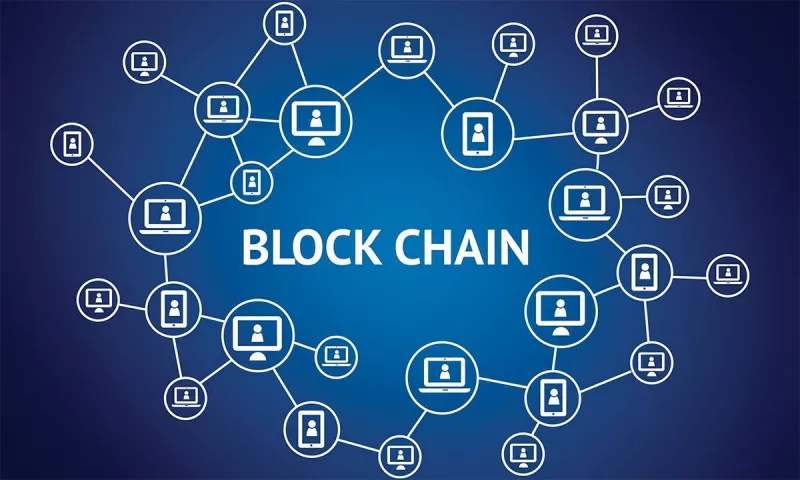The Domain Name System (DNS) is something that the average internet user has regularly interacted with, but rarely do they have an idea of how it works under the hood.
Putting it on a silver platter, this integral piece of internet infrastructure is what allows you to type the namespace “linkedin.com” instead of the IP address “108.174.10.10” on your web browser. Imagine if you have to remember every single IP address of your favorite internet service — not too convenient, isn’t it?
With that said, there exist gross inefficiencies plaguing the traditional DNS value chain — giving rise to the narrative of blockchain domains as the next-generation solution for IP address naming.
Read Also: The Future of Mobile Applications Is Brighter With Machine Learning
Before we get into it though, you will need to know some of the key concepts regarding how the traditional DNS actually works behind the scenes.
Read on.
The Domain Name System (DNS)
The name “google.com” might be easily ‘remember-able’ for us humans, but for computers who are actually doing the grunt work, this alphabetical string is actually a pain in their (metal) ass.
We assign alphabetical names like “Joe” or “Jill” to people, mainly because it is easy for us to refer to people by these names. For computers however, it is easier for them to refer to each other with numerical names (or what we call as IP addresses) like “105.21.51.78”.
To address this difference in naming preference between humans and computers, we came up with something called the Domain Name System (DNS). In simplest terms, it allows humans to assign a human-readable name in place of a computer’s machine-readable name. These records are then stored on a huge lookup database.
From the user’s perspective, upon requesting “google.com” from the web browser, the text will be directed to this lookup database — which then determines whether “google.com” actually exists. If it does, the database will return its associated IP address, in which the web browser will use it to locate the server where the content is hosted on.
The whole process is analogous to asking a librarian where a certain book is located: 1) you tell the librarian (the lookup database) the name of the book that you’re looking for; 2) the librarian searches for the book’s location as per the library’s records; 3) if it exists, the librarian replies you with the book’s exact aisle, shelf, and row number so that you can go and retrieve it.
This huge lookup database is collectively maintained by ICANN and its network of registries and registrars. ICANN (Internet Corporation for Assigned Names and Numbers) oversees the maintenance of the root name server. Following on, registries are responsible for top-level domains (TLD), and registrars manage second-level domains (SLD) and its constituents.
Relating back to our library analogy, aisles will be the equivalent of the root name server, shelves will represent top-level domains, rows will be like second-level domains, and so forth.
The hierarchical design of the DNS means that only ICANN is able to add a new TLD into the root name server. To register a new TLD, registries must submit a paid application to ICANN, then wait for approval before the TLD is reflected on the root name server by ICANN.
Registries come in all shapes and sizes depending on the nature of the TLD. In the case of “.com” and “.net”, since they are meant for commercial purposes, they are maintained by Verisign, an American for-profit firm. There are also TLDs reserved for sovereign nations such as “.au” for Australia, or “.uk” for the United Kingdom — usually maintained by a government-sanctioned entity.
Going down the bottom of the food chain, just like how registries require ICANN’s approval to register a TLD on the root name server, registrars will also need to obtain a registry’s approval for the right to register SLDs on top of the registry’s ICANN-approved TLD. Fees will depend on the registry itself — but as a rule of thumb, commercial TLDs like “.com” will usually cost more.
Registrars are usually the first point of contact for most people: interfacing with the likes of GoDaddy when looking to buy domain names. Accordingly, registrars maintain SLD ownership records for their customers — where its main responsibility is to prevent ownership conflicts.
All in all, the DNS is essentially a unified view on world domain ownership, spearheaded by ICANN along with its network of registries and registrars.
Blockchain Domains: Disrupting Registries and Registrars in One Fell Swoop
Due to the nature of the traditional DNS, gross inefficiencies will emerge as a byproduct of the coordination overhead amongst participating intermediaries. Recall that the DNS involves at least three separate entities: ICANN, registries, and registrars.
With each layer of intermediary comes additional red tape to jump over when processing SLD registration requests, and more cuts taken from the “domain registration pie” to sustain each intermediary’s operations (along with some profits for its shareholders). As a consequence, these costs get directly passed down to us, the end-users buying up the SLDs in the first place.
Historically, there needs to exist a separation of powers on TLD and SLD registration. If not, rent-seeking practices would gradually ensue — a natural repercussion of centralized management. But now for the first time ever, TLD and SLD registration could be rearchitected into a single cohesive unit: the blockchain domain protocol.
Building on the above, just like how DeFi has managed to disrupt the entrenched banks and financial institutions of our traditional financial system, blockchain domain protocols could potentially take on the roles of the registries and registrars of our traditional DNS in one fell swoop.
Instead of having Verisign and GoDaddy as the TLD registry and SLD registrar respectively, a smart contract could act as a “container” for a TLD, in which SLDs on top of this TLD would be represented as distinct NFTs — one NFT for each SLD. As such, anyone will be able to claim an unowned SLD for a fee anchored on supply and demand, wherein the fee determination algorithm would be enshrined within the protocol itself. This transparency ensures that instances of manipulation is highly unlikely, if not infeasible.
This “SLD NFT” would also be freely tradable, since it is an on-chain NFT. In terms of market dynamics on highly sought-after domain names, the same implications found on the traditional DNS would also carry over to blockchain domain protocols: the more lucrative an SLD is regarded (for instance, a short SLD with a catchy name), the higher price the SLD would command.
Underpinned by the blockchain’s properties of credible neutrality and decentralized consensus, once a party claims a domain name via SLD NFTs, ownership of the domain will be irrevocable and immutable — assuming the owner pays its associated renewal fees in time throughout its tenure. Since SLD NFTs are transferrable just like regular tokens and NFTs, they would be able to be resold on secondary markets at the discretion of their owners.
In the event of domain name defaults, the smart contract will automatically update the subject domain name’s ownership status on its registry, such that it is available for purchase by interested parties. The SLD NFT belonging to this defaulted owner would become worthless — the smart contract will mint a new SLD NFT for the domain’s new owner upon verification of the purchase, which will then be reflected on its registry in place of the old SLD NFT.
In addition, it offers an additional benefit native to the crypto space: referencing a crypto address with a remember-able name. In this case, if the lookup database of the traditional DNS only contains two “columns” (namespace, IP address), the lookup database of blockchain domain protocols would consist of three “columns” (namespace, IP address, crypto address). As such, users will be able to send crypto transactions via remember-able domain names instead of having to input the full string of a crypto address.
In a nutshell, blockchain domain protocols safely combine the functions of registries and registrars under one unified umbrella. The deterministic nature of smart contracts, coupled with the blockchain’s inherent properties of credible neutrality and decentralized consensus, eliminates the need for centralized intermediaries to step in and mediate world domain ownership.
The cost of domain ownership would significantly decrease: less intermediaries would mean less red tape and more efficiency across the board, eventually leading to cost savings for the end-users.
Looking Forward
Currently, the utility of blockchain domain protocols is still restricted to referencing crypto addresses via human-readable names. For blockchain domains to be able to reference IP addresses (for hosting websites, etc.), the protocol needs to first obtain ICANN’s approval for its TLD, so that the TLD can be reflected on the root name server.
As blockchain domain protocols approach maturity, governance of the smart contract registry could be gradually handed over to a DAO, where its scope might include: adding a new TLD and creating a new registry for it, removing underutilized TLDs and deleting its associated registries, leading ICANN talks to register a new TLD to the root name server, altering the protocol’s value accrual model for its native token, protocol fiduciary elections, and other ad-hoc resolutions.




